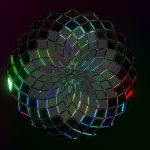The Hatha Yoga Pradipida is an ancient amalgamation of knowledge about cleansing and purifying practices that is still widely referenced today. If you’re uncertain that a book written around the 15th century retains much modern-day relevance, take a look…
Name: Hatha Yoga Pradipika
Date written: 15th century approx. (some dates go as far back as the 6th century)
Author: Yogi Swatmarama
First translated into English: There are many translations, but one of the earliest was thought to have been around 1914, by Pancham Sinh.
Popular translations: The Bihar School book by Swami Muktibodhananda is a popular option.
Key themes: The book is split into four sections, all of which explore practices to cleanse and purify the body.
Chapter 1 deals with asana, chapter 2 explores shatkarmas and the six key pranayama practices, chapter 3 looks at mudra and bandhas and chapter four comes to samadhi, or enlightenment.
Some of these practices are still recognisable to us today – postures such as paschimottanasana for example – but there are others (making yourself sick, anyone?) that may seem a bit alarming at first.
What is the Hatha Yoga Pradipika?
The word pradipika means to shed light, so we can think of the Hatha Yoga Pradipika as a guide to the mysterious world of Hatha Yoga. Hatha Yoga is the science of yoga, which purifies the physical body by means of shatkarma, asana, pranayama, mudra, bandha and concentration, as a prelude to Raja Yoga and samadhi.
Hatha Yoga is given as a path one takes to reach the path of Raja Yoga, the yoga of discipline and self-control. The translations explore the chakra system, prana and kundalini as well as the physiological effects of yoga, but the original book itself gave sometimes quite vague instructions on how to achieve practice Hatha Yoga. It is thought to have purposefully left out information so that students would need an experienced guru to guide them through the fine detail of the practices.
See Also: Use Kundalini Yoga to Awaken your True Potential
Why Should I Read It?
If you think asana is the be all and end all to your yoga, this book will open your eyes to another side of it all. The book takes the viewpoint that Hatha Yoga is a process of transformation from gross (prakriti) to subtle (turiya) to divine (the fourth state of consciousness), and because of this, is the foundation of higher states of yoga, known as Raja Yoga.
The purpose of Hatha Yoga is relief from three types of pain — physical, environmental and spiritual, and through the practices giving in the Hatha Yoga Pradipika, we are able to prepare the body for the Raja Yoga.
Interesting Fact: The Hatha Yoga Pradipika is part of a holy trinity of books about Hatha Yoga, sitting alongside Gheranda Samhita and Hatharatnavali, all of which were considered to be written between 6th – 15th century AD.
Important Quotes
“In Hatha Yoga we unite the pranas. We become free through the power of kundalini. We are conscious. We are free.” Chapter 1, Verse 4
“In yoga and tantra there is an eternal truth: the basis of existence depends on Shiva and Shakti, or consciousness and energy.” Chapter 2, Verse 1
“Prana has to be channeled and redirected so it is not wasted.” Chapter 2, Verse 15
Key Sanskrit Terms
- Chitta vritti — Mental movement or modification (also in the opening of the Yoga Sutras)
- Ekagra — One-pointed mind
- Naadi — Sounding / Roar
- Muktih — Liberation
- Siddha — Perfected one
- Yama — The ten rules of conduct
- Niyama — the ten observances
See Also: Yamas and Niyamas: The 10 Attitudes to Help You Live a Fully Yogic Life
I’ve Got 10 Minutes, Which Bit Should I Read?
Most of the book is instructions on how to perform the various shatkarmas, asana, etc. Many translations have a pretty good intro covering history, background and a relevant context — so that could be a good place to start.













